Installation view of Ami Morris, Mirror, Left to right, Meeting at the Roots and A Way In, Victoria, 2024, Oil paintings, 137 x 167 cm, NAP Contemporary, Mildura. Photo: Courtesy of NAP Contemporary
Mirror
Eleanor Laver
We speed to our destination, Mildura, with a hair out, windows down energy. I’m with artist Ami Morris, and we’re driving out for the opening of Mirror, her solo painting show at Nap Contemporary. Morris hasn’t slept and I’ve just broken up with someone, so we sit serenely for most of the trip: a brisk 6 hours from Melbourne. Mildura translates to “red earth” in the First Nations Latje Latje language. The Latje Latje and Barkindji peoples have been the traditional owners of the land in and surrounding Mildura for thousands of years. In 1888 the Chaffey Brothers rolled into town and settled with an aim to build an irrigation colony and a fruit farming enterprise. The Chaffey Brothers had previously founded towns in California, so it’s no coincidence that Mildura feels like something out of San Bernardino valley. Fountains and roses pepper the main drag, and hotel gardens and palm tree-lined streets give the town a strange West Coast allure. Morris and I, having had our experiences of growing up in rural parts of Australia, are unsurprised by how easy-going the locals are to talk to, or in our case to bum a lighter off at one of the local pubs. Here we meet a jovial local man who courageously dips his head into a roaring open fire to light our cigarette. This is where we also meet the father of Nap Contemporary Co-Director, Riley Davison, whose former car dealership is now the site of the gallery.
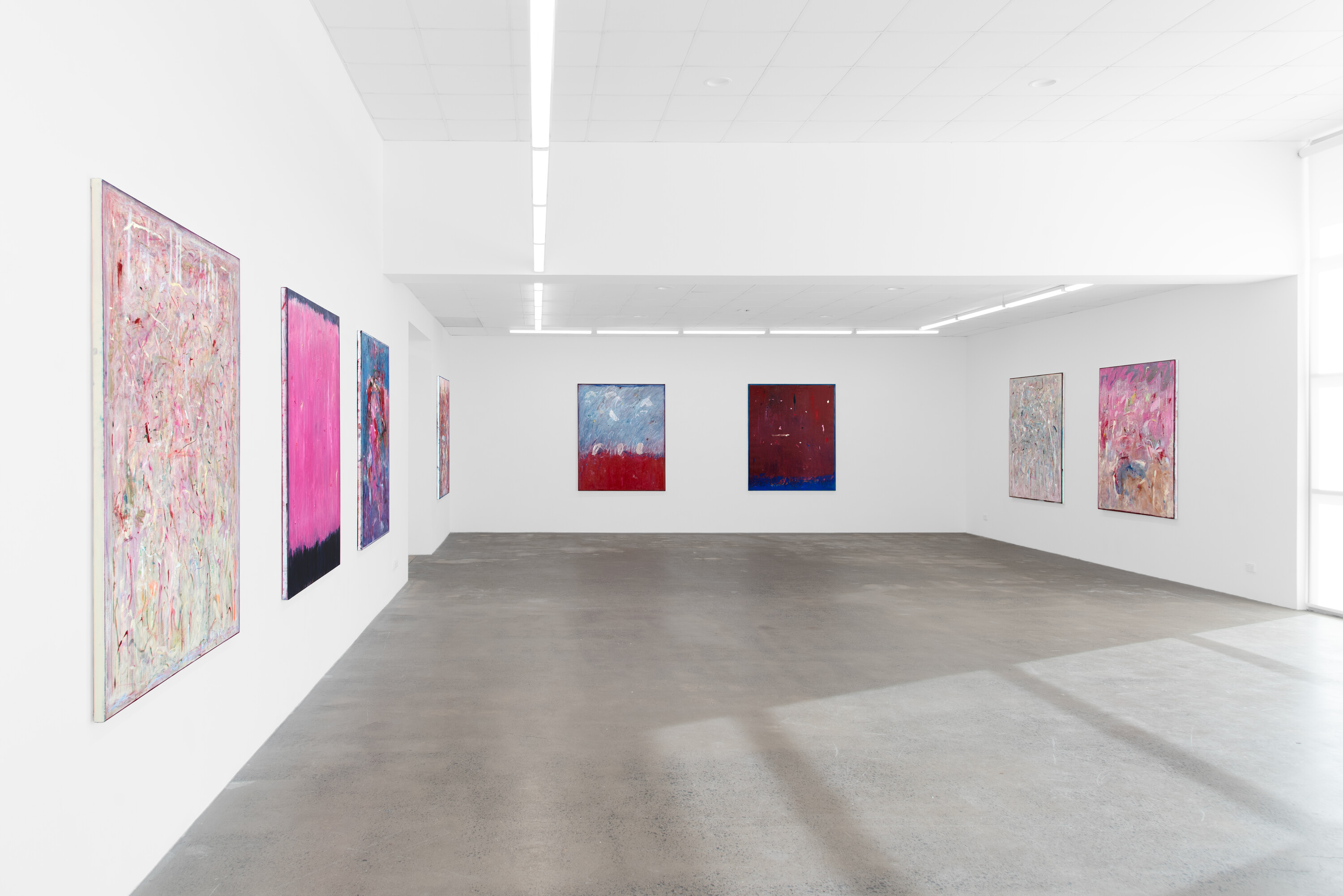
Installation view of Ami Morris, Mirror, Victoria, 2024, oil paintings, 167 x 137 cm, NAP Contemporary, Mildura. Photo: Courtesy of NAP Contemporary
Ami Morris is a multi-disciplinary Melbourne-based artist, and Mirror is a suite of eight energetic new paintings. Each work is the same scale (167 x 137cm), on either a linen or cotton canvas, with a palette of pinks, pastels, blues, burgundies, earthy browns, beiges, and some strikes of green. There is also mark-making in pencil, and scratches impressed into the generous layers of oil paint. This is Morris’ fourth solo show in Australia and abroad. She presented her inaugural solo Further Thoughts at Oigall Projects in 2021 (during the last legs of an unforgiving and unforgettable Melbourne lockdown era), followed by Solo Presentation at Discordia Gallery in March 2022 and Ghostly Disclosure at Aotearoa Art Fair in November 2022. Compared to the previous shows, Mirror feels like a progressive step forward for Morris. It holds a more considered palette, deeper compositions, and greater sophistication in mark making, and I find myself making connections to other artists’ works. The pink hues in Morris’ paintings are perhaps a millennial version of Philip Guston’s 1950s abstract expressionism, and I’m reminded of the gestural mark-making in the work presented by Melbourne-based artist Anais Baker at the 2023 Monash University grad show. I’m also reminded of the ability of painters like Helen Frankenthaler (1928–2011) to draw and sink the viewer into her work. Like Frankenthaler, Morris offers an ever-changing current of emotion and energy, evident in the composition, scale and colour palette. When I speak to Morris, she tells me Cy Twombly (1928–2011), also a focal figure in abstract expressionism, was an initial inspiration in regard to her mark-making and aesthetic. Morris felt that she understood his work instantly; it made sense to her and allowed her to derive a personal connection to the work. Traces of the infamous scribbles and scratches in Twombly’s Bacchus series (2003–08) are apparent throughout Mirror, particularly in A Way In and Unfold.
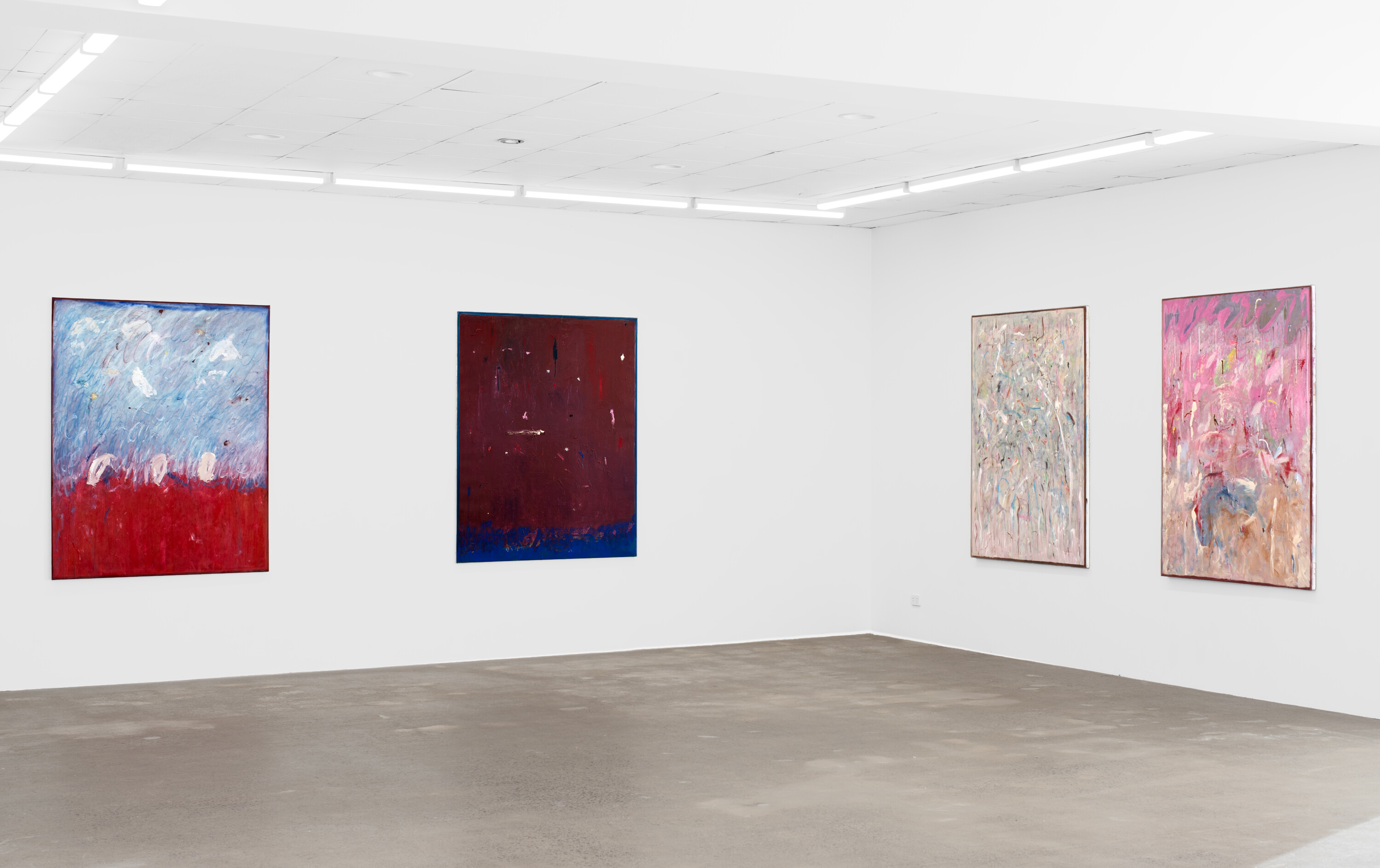
Installation view of Ami Morris, Mirror, Victoria, 2024, Oil paintings, 167 x 137 cm, NAP Contemporary, Mildura. Photo: Courtesy of NAP Contemporary
The exhibition opening is small but strong. It’s a long weekend, so most of Mildura is necking a pint at one of the local pubs while they’re gearing up to watch the footy final. Upon arriving, we’re welcomed by the gallerists, Erica Tarquinio and Riley Davidson, who promptly pour us a drink, ushering us towards the generous display of food platters. This is a nice break from the debauched art openings I’m used to attending, with their thick ghastly clouds of smoke, cheap booze, sticky floors, and shocking fluorescent lighting. Here at Nap, it’s a different story. The space is open, and the ceilings are tall. It’s airy, clean and sophisticated, unlike the hazy demonic artist-run backyard galleries. Nap has hosted a number of memorable painting shows since its inception in 2022: Josh Krum’s New Paintings (2022), Annabel Robinson’s Theorems (2023), and Scott Redford’s Auto Rothkos (2024). Each of these shows was varied in terms of scale, medium, composition, and conceptual approach; however, each offered a distinct personal examination of authenticity and complexity. Mirror continues the conversation about contemporary painting presented through the gallery’s relatively young programme, and although the art crowd may be smaller than the footy crowd at the pub, there is a strong sense of support for the arts throughout.
The works in Mirror are spaced thoughtfully, providing the viewer with a glimpse into their different temperaments and, it seems, into the differing emotional states of the artist. Somewhere In Between feels spirited and sophisticated, with a soft yet vivacious pink perfectly balanced by an impressive ink navy. To the right is To Meet Desire. It’s chaotic, manic, irritable, and honest. It’s like the personality of an unscrupulous teenager, filled with angst and the ardent desire for trying new things, and prone to fits of rage. It reminds me of being trapped in a boarding schoolhouse, unable to express myself past 10pm, itching for escape and rebellion. It seems evident to me that each work offers a glimpse into what Morris was feeling on that particular day. However, when I speak to Morris, she tells me that eight paintings were sometimes worked on all at once, layered, left to rest and laboured on relentlessly.
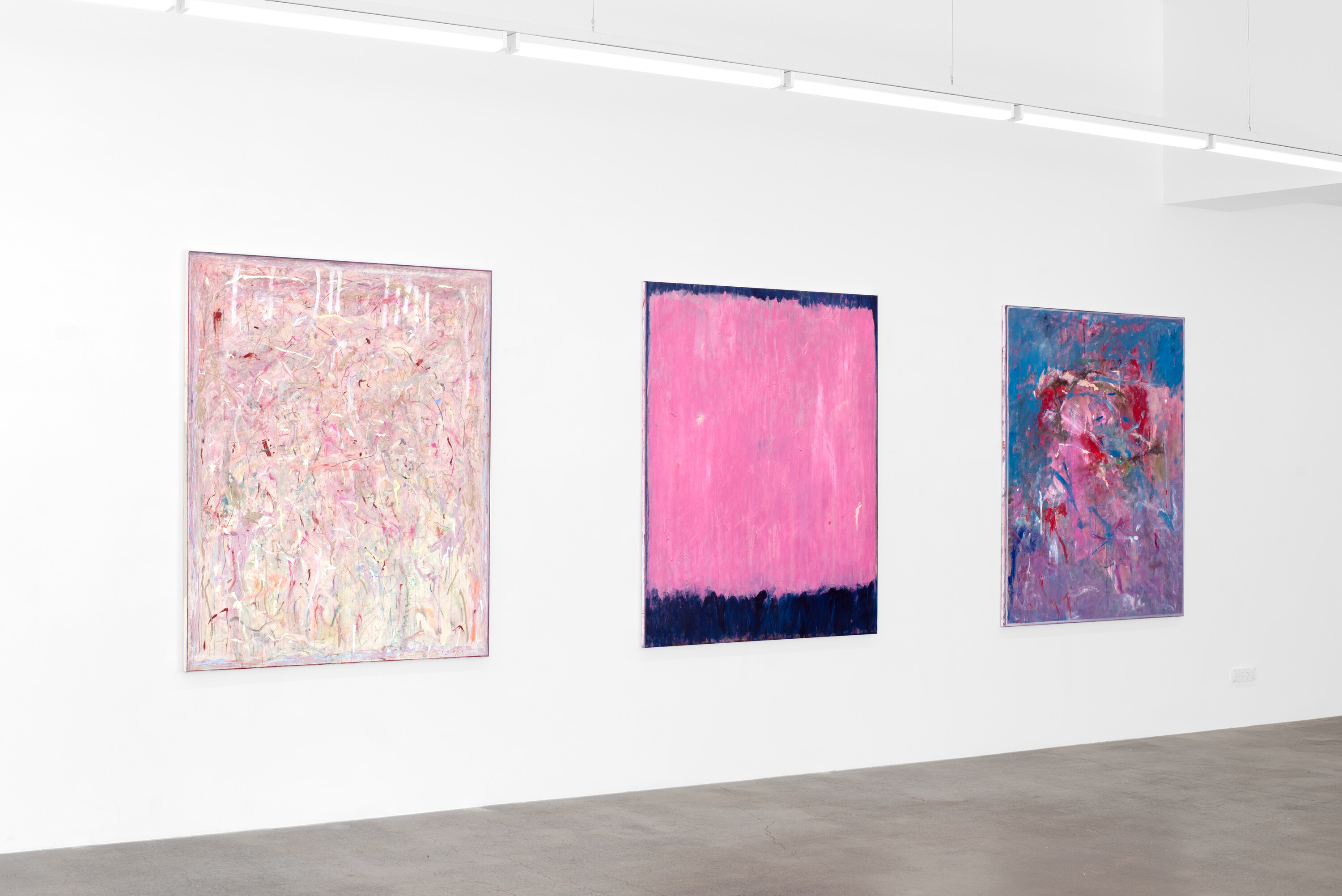
Installation view of Ami Morris, Mirror, Left to right, The Walls Around Us, Somewhere in Between and To Meet Desire, Victoria, 2024, Oil paintings, 167 x 137 cm, NAP Contemporary, Mildura. Photo: Courtesy of NAP Contemporary
There is an undeniable enigmatic driving force in Mirror. To me, the show seems to display Morris’ inner world, performed through a range of mixed media: oil sticks, oil paints, acrylic, plaster, pencil, charcoal, and glue. In works like Internal Thorns, indentations, marks, strings, and cardboard protrude from the canvas. Morris’ differing emotional states lend contradictory temperaments to the work: the textures, marks and dramatic brush strokes are sometimes gracious and sometimes violent. A controlled yet chaotic sensibility is evident across each painting. When I look at Tissue Box and Internal Thorns, I get the feeling of being scattered, rushed, unimpressed, moody, and tumultuous. When I approach The Walls Around Us and Meeting at the Roots, I get a vivacious, tempered, balanced, and harmonious version of Morris. It’s like the dust has settled or something clicks. There is a controlled and composed rhythm. While I had numerous conversations with Morris prior to the show I never visited her studio, so I didn’t know what to expect. To me, Mirror feels vital because it seems to uncover a nuanced personal narrative entrenched in thick layers of paint, physical labour, and tender emotional states.

Installation view of Ami Morris, Mirror, Left to right, Tissue Box and Unfold, Victoria, 2024, Oil paintings, 137 x 167 cm, NAP Contemporary, Mildura. Photo: Courtesy of NAP Contemporary
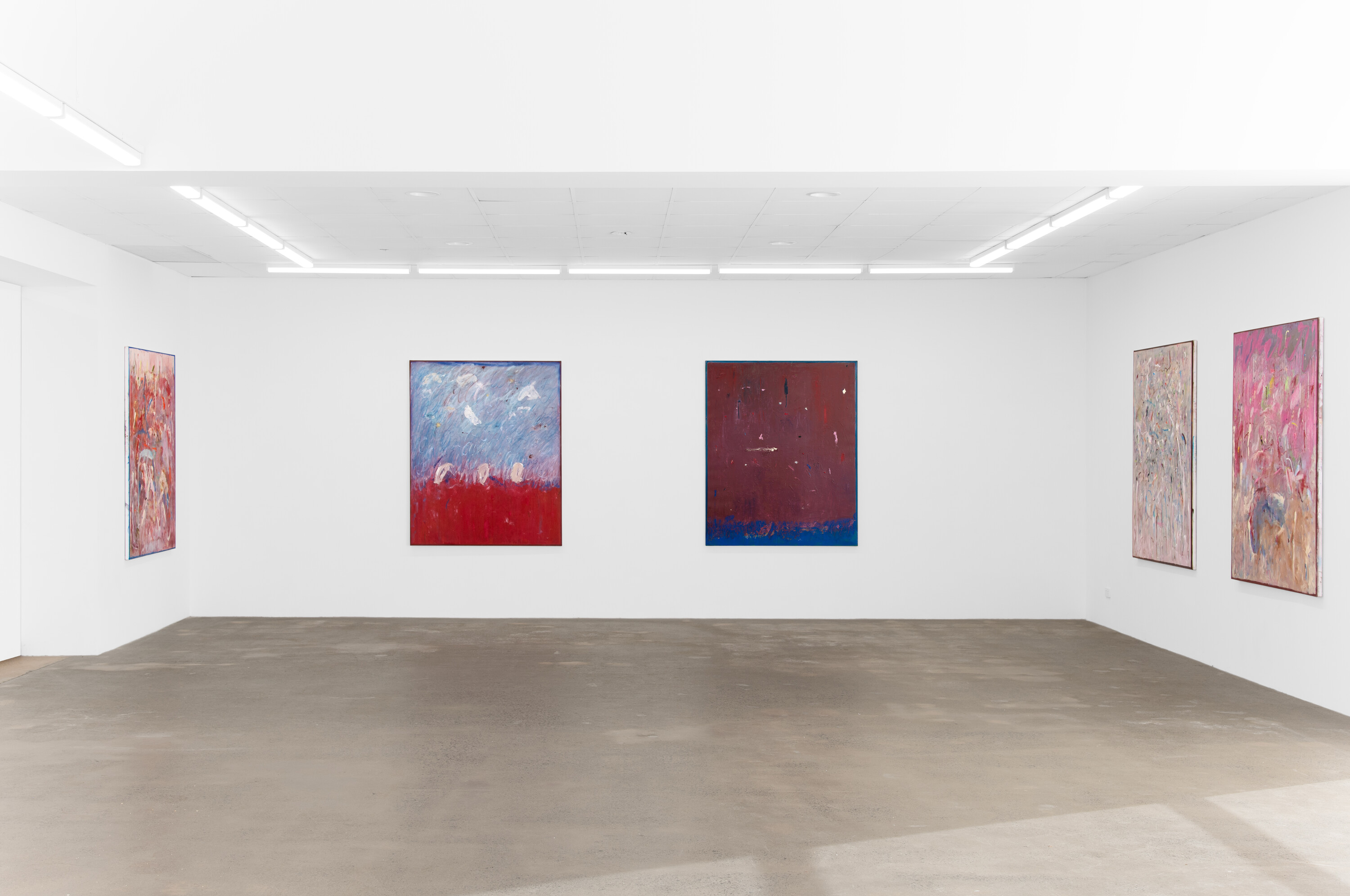
Installation view of Ami Morris, Mirror, Victoria, 2024, Oil paintings, 167 x 137 cm, NAP Contemporary, Mildura. Photo: Courtesy of NAP Contemporary
However, the conceptual underpinning of these works is the mirror, and it’s not clear if we are witnessing the artist’s self-examination or our own. Perhaps, Morris asks us to look within at the messiness of how we perceive ourselves. It’s ever-changing, equally ugly and beautiful. Often it may take someone else to hold a mirror up to you, pointing out the beauty marks they adore or the internalised inter-generational trauma they despise. Someone might find a painting confronting and intense, others may find it beautiful, or they may simply ask themselves: what’s the point? It’s just some marks chucked together on a canvas. As individuals we’re not really in control of our reflection or how we’re perceived by others. For me, Morris’ exhibition is clever, empathetic, emotive, and intuitive. It’s also forward and demanding, not in a hackneyed rockstar oil painter way, more in a “I have to do this, my life depends on it” kind of way.
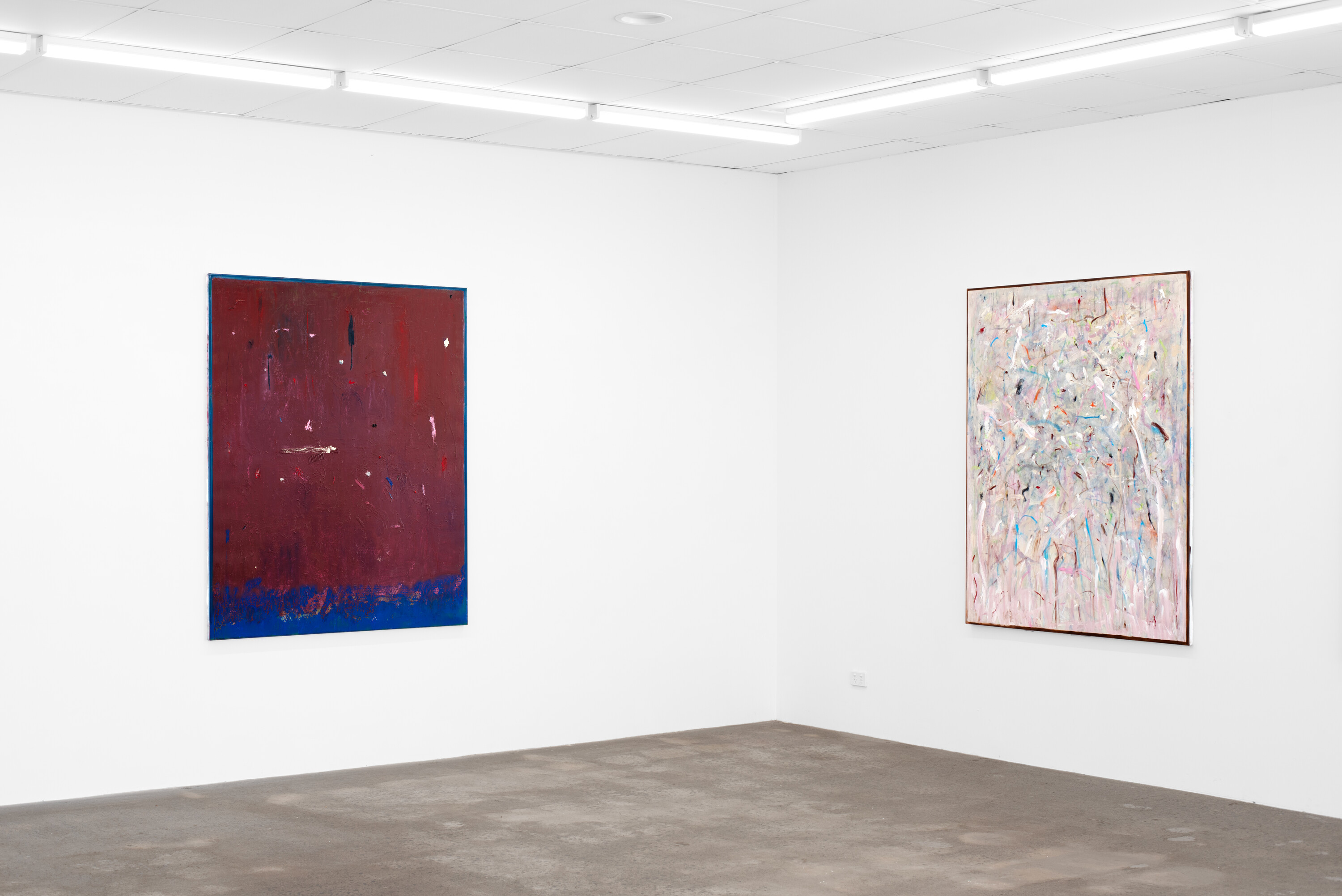
Installation view of Ami Morris, Mirror, Left to right, Internal Thorns and Meeting at the Roots, Victoria, 2024, Oil paintings, 137 x 167 cm, NAP Contemporary, Mildura. Photo: Courtesy of NAP Contemporary
Eleanor Laver is an emerging writer, artist and co-founder of Hyacinth gallery.


